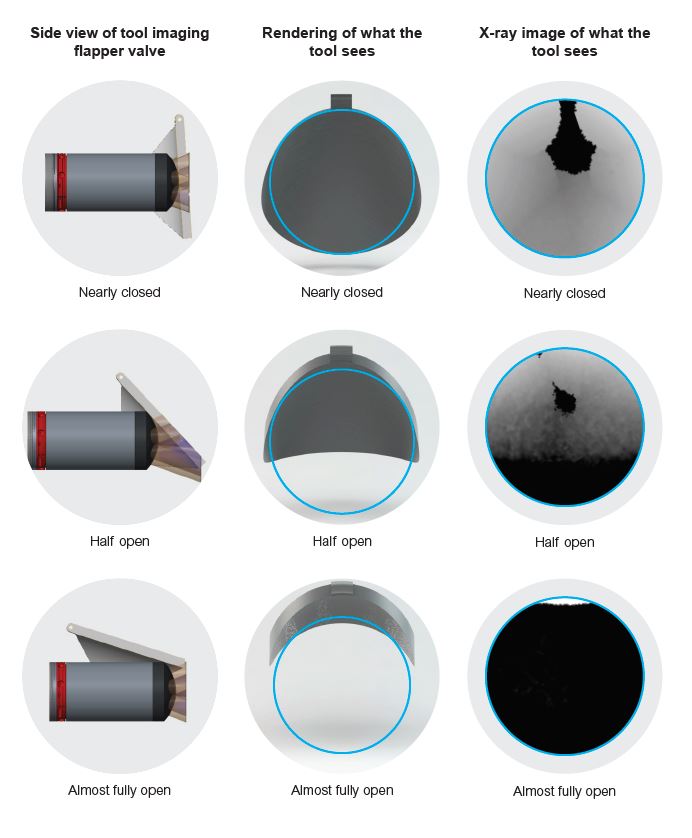Client Case Study
The Challenge
The operator was considering converting a North Sea injection well into a producer, but the decision was held up by what appeared to be a malfunctioning downhole safety valve (DHSV). They suspected that the flapper on the valve was stuck in an open position. This would prevent the placement of an insert safety valve, leaving them with a tough choice between attempting to mill out the flapper and recompleting the well with a new DHSV.
Our Solution
Visuray's VR90 downhole X-ray diagnostic service was used in the client's well to evaluate the condition of the DHSV. Images obtained with the tool at several positions along the valve showed the flapper open to differing degrees. The flapper was therefore not stuck in an open position, contrary to expectations. Most importantly, the images demonstrated that the flapper should open wide enough for the insert DHSV to pass through.
Three of the X-ray images acquired by the VR90 tool are shown far right. Side view drawings of the corresponding tool and flapper position, and renderings of what the tool sees are also shown. From top to bottom, the X-ray images show the flapper nearly closed, halfway open, and almost fully open. As indicated by the drawings, the VR90 tool was resting on the flapper and pushed it open as the tool was moved through the valve.
The X-ray images show that the maximum measured opening angle of the flapper was 73°. With this information, the client was able to determine the maximum diameter of tools or hardware that could safely pass through the valve.
Client Benefit
The operator was able to determine the condition of the downhole hardware and plan the most cost-effective course of action. Specifically, the VR90 measurements verified that the insert DHSV could be installed through the existing valve. This eliminated higher-risk options such as milling the flapper. The operator subsequently inserted the DHSV successfully.
By using the VR90 downhole X-ray diagnostic service, the operator was able to reduce uncertainty in the decision-making process, saving time, reducing costs, and increasing operational safety. View Client Case Study PDF
